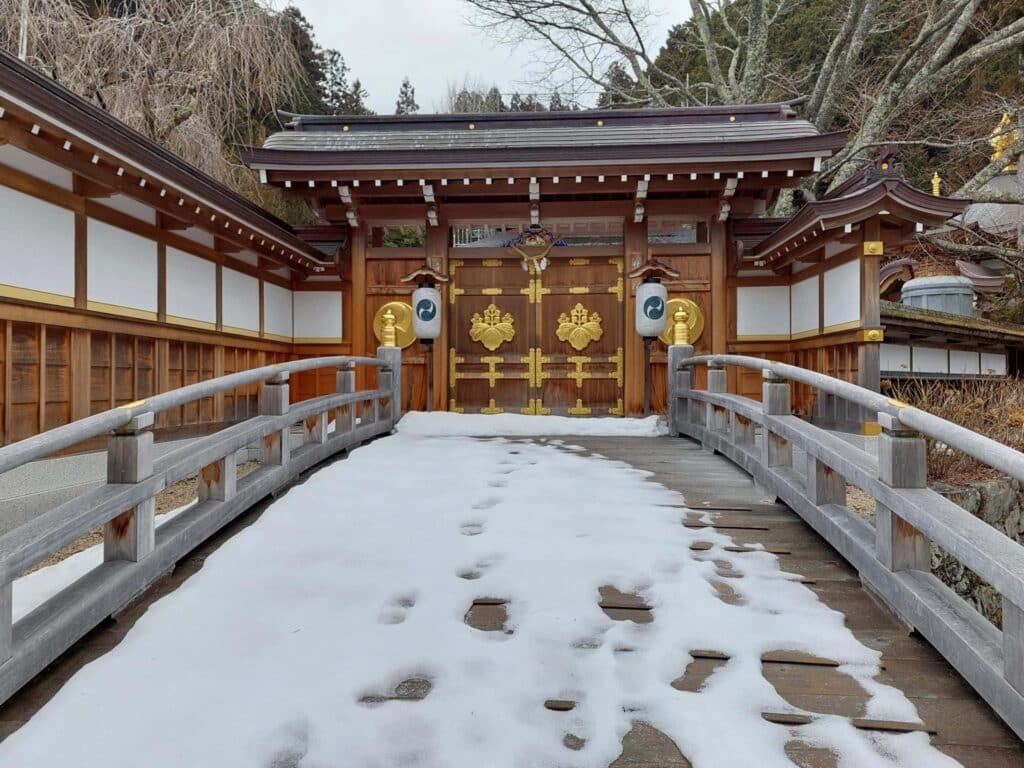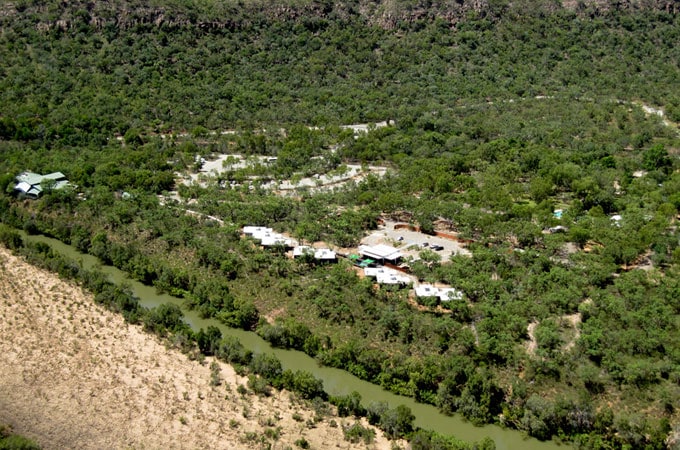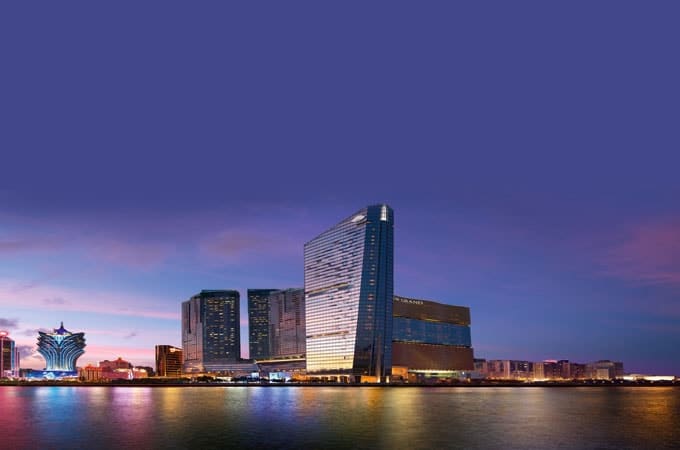Forest bathing & a temple stay at Japan’s ancient Koyasan
While Japan is full of cultural highlights, ancient temples, and glorious scenery, the 1200-year-old mountaintop sanctuary of Kōyasan (Mount Koya) is something special. Located south of Ōsaka in the Wakayama Prefecture, this sacred back-to-nature escape invites you to step back in time. Paulene and Trevor Joslin recently enjoyed a winter temple stay in this deeply spiritual, incredibly beautiful region of Japan.
Here’s what they found …
From the moment we read about Koyasan (Mount Koya), we knew it was a must-see for our trip to Japan. One of the UNESCO World Heritage sites in the Kii Mountain Range, Koyasan is the birthplace of Shingon Buddhism and home to over 100 temples, some dating back to the 9th century.
Located south of both Kyoto and Osaka, it’s also a connection point for one of the heritage-listed Kumano Kodo Pilgrimage Trails that cut through the forests and valleys and down to the sea.
Although enticed by the spirituality of this ancient region, we were also drawn to its incredible natural beauty. Set within densely wooded forests of cedar, cypress, pine, and fir and surrounded by mountain peaks, Koyasan is stunning. Cherry blossoms, hydrangeas, and autumn leaves help mark Japan’s distinct seasons and visited in winter, and, being Queenslanders, were enraptured by the snow.
Staying at a Buddhist temple in Koyasan, Japan
Yet another plus was the chance to stay at a temple. Over 50 temples in Koyasan offer lodgings (called shukubo), and we booked two nights at the Sojiin Temple. It ticked every box: central location, positive reviews, traditional rooms with futons and tatami floors, and breakfast and dinner on offer. The clincher? We could join monks for morning prayers in the attached temple.
Related Article: Insider Tips To Unique Things to Do & See in Japan
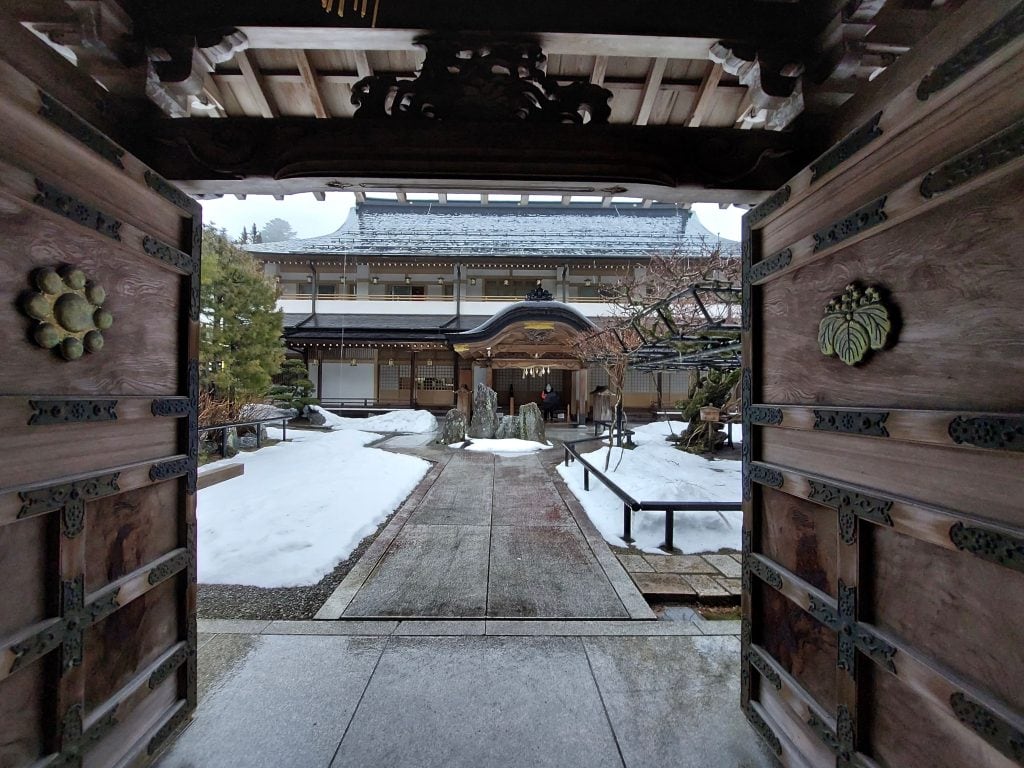
A delightful scene greeted us on arrival — a sprawling temple complex dotted among the trees, all blanketed in snow, with our cosy room overlooking a charming Japanese-style garden. The clincher? A private and scalding-hot onsen (hot spring bath) to soak our travel-weary muscles (more on the journey part of our trip below).
Despite the language barrier, the temple monks were friendly and kind, and morning prayers were a highlight of our stay (we even braved a second 6am start to attend the next day). Meals were served by the monks in a dining hall, with screens placed to create privacy. The shukubo vegan food was gourmet-style, plentiful, and quite delicious, with wine and saké also available. Though I must admit, we lunched on ham and cheese toasted sandwiches at a nearby café — perhaps not quite in the spirit of things!
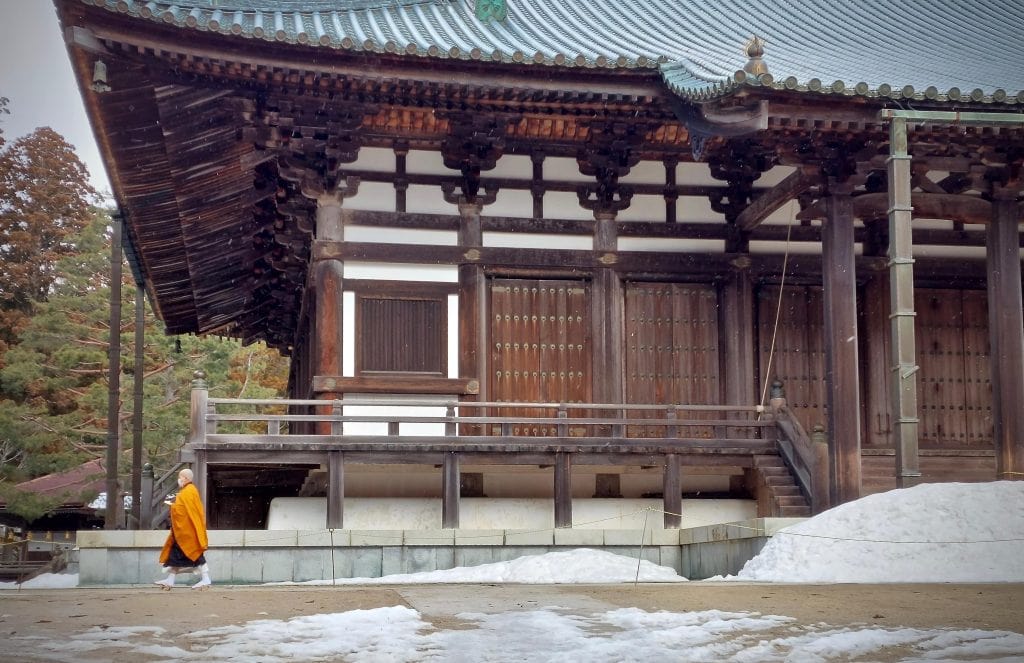
Ancient temples & a sacred cemetery
Our sightseeing highlight in Koyasan may seem like a bit of a wildcard: Japan’s largest cemetery, Okunoin. A short bus ride from the town centre, Okunoin is home to the impressive mausoleum and temple of Kōbō Daishi (also known as Kūkai), a revered priest who established Shingon Buddhism in Japan around 1200 years ago. We’d pored over photos of the 200,000 moss-shrouded tombstones, resting places for many of Japan’s prestigious nobles, warriors, spiritual leaders, and common people (all wanting to be close to Kukai) and the experience bordered on mystical.
We arrived early in the morning — very atmospheric with the flickering glow of stone lanterns, dim grey light falling through the canopy of trees, and frequent chilling snow flurries. Cedar trees towered among the tombstones, birds called, snow enveloped the tops of tombstones, red temple roofs and dense evergreens. The little red bibs and hats on many of the statues in the cemetery contrasted dramatically with the dark stone and white snow. Apart from the bird calls, all was silent, spine-tingling, holy. The scattering of visitors appeared hushed in wonder.
Related: Make the most of your time in Tokyo with this comprehensive holiday and honeymoon guide for couples.
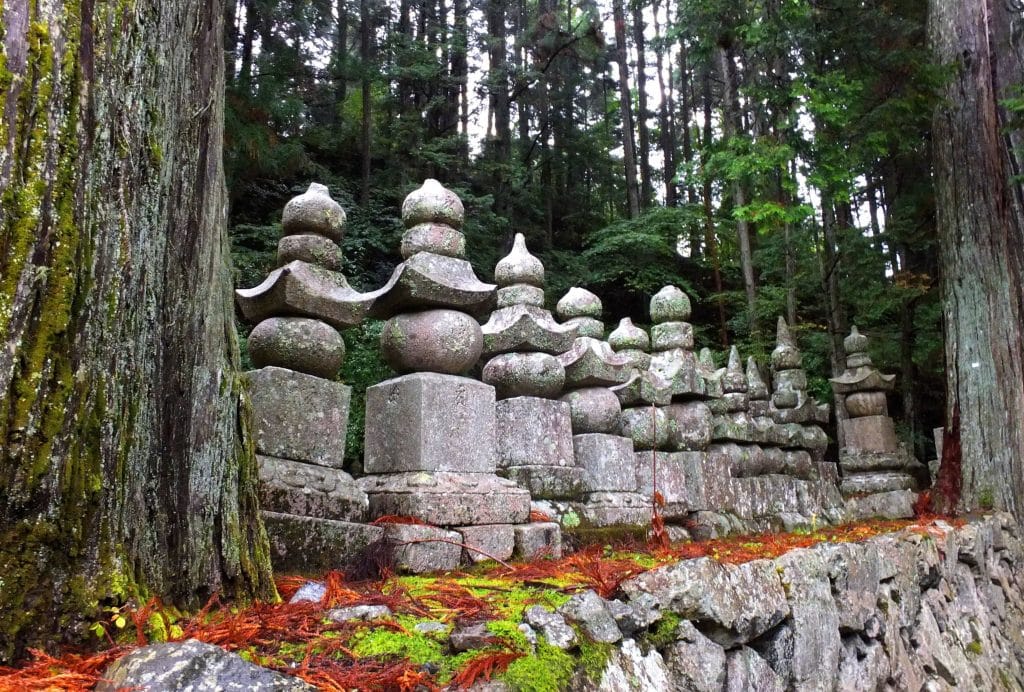
For those keen to delve deeper into the history of this ancient place, tour groups visit the cemetery at night with English-speaking guides. We now regret not joining them, but the winter temperatures had us scuttling inside for a hot onsen as evening drew in.
Koyasan abounds in Buddhist temples (usually called pagodas) and shrines, many tucked away in the picturesque woodlands. Don’t miss the Danjō Garan temple complex (circa 816) in the heart of town. The two standout buildings are the huge timber Kondo Hall, used for major Buddhist ceremonies, and the vermillion Konpon Daitō Pagoda. At 48.5 metres tall, this eye-catching structure is home to several statues of Buddha as well as colourful images of other deities painted on the pillars and walls to create a stunning mandala.
The scarlet Daimon Gate, a 25-metre-high beauty regarded as the region’s ‘main gate’ is another excellent photo-op. We also enjoyed the Reihokan Museum, a treasure-trove of Buddhist paintings, sculptures and cultural artefacts. Koyasan offers other experiences, including meditation, Buddhist teachings, sutra copying, and fire ceremonies. Though, it’s worth noting that not all are available in winter.
How to reach Koyasan from Osaka & Kyoto
Some people visit Koyasan as a day trip from Osaka — but we found staying two nights meant we could experience the region more intimately. It also left us time to recharge because (although we loved the snow) travelling from Kyoto to Koyasan in winter was quite the journey.
Outside the winter months, a bus runs directly from Kyoto to Koyasan. Instead, we left early by train from Kyoto Station to Osaka Station (30 minutes), then travelled by underground from Osaka Station to Namba Station (about an hour after getting lost in the customary melee). There we transferred from the Japan Rail line to the Nankai Rail line and headed to Gokurakubashi (about 90 minutes) where we were whisked up the mountain by cable car to Koyasan (5 minutes).
The Kōyasan Cable Car offers a short but memorable experience, soaring above treetops and deeper into the forest. We even spotted a wild deer. A final bus connection then dropped us off close to our accommodation. Fortunately, the Tourist Information Centre at Kyoto Station was very helpful in explaining (in English) what we needed for this journey and providing written information — even a map to navigate from one side of Kyoto Station to the other (which we needed more than once in this immense building!).
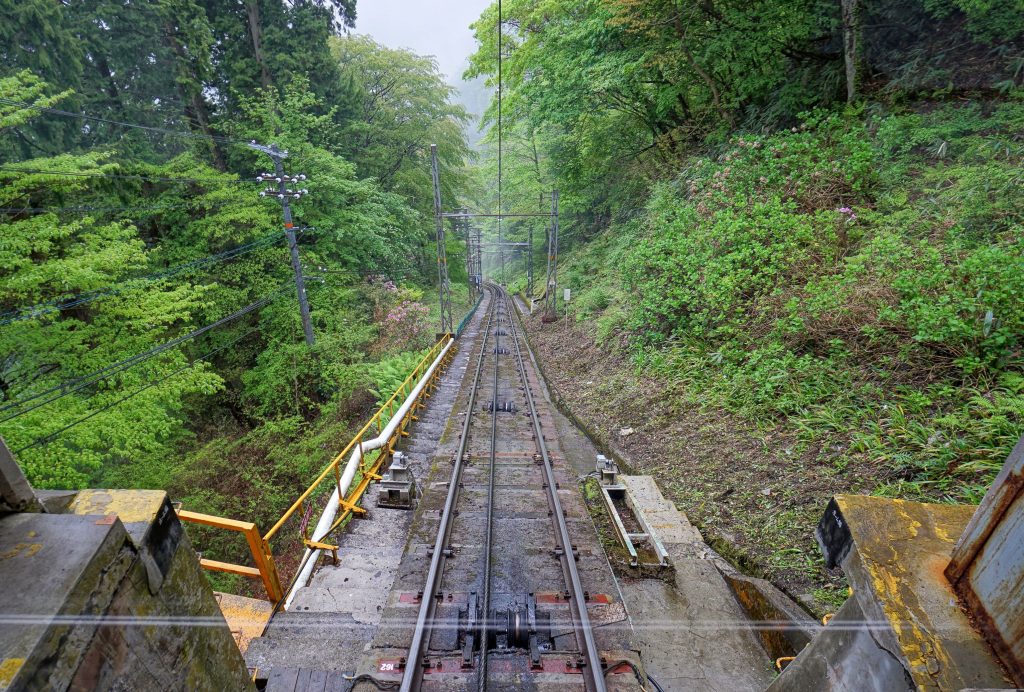
Good to know for getting around Japan and Koyasan
As with most of our travel around Japan, we used JR (Japan Rail) passes where possible. At the Nankai Ticket Office at Namba Station, we bought an additional discount ticket (The Koyasan World Heritage Ticket), which covered the round trip between Namba Station and Koyasan, and cost about A$36. This ticket also provides, over two consecutive days, free bus trips within Koyasan, coupons for admissions to some temples and museums, and discounts at some souvenir shops. We hardly used buses in Koyasan, although they circle the town regularly, as it was easy to walk around the town and surroundings.
We look back on this part of our journey through Japan with real pleasure. For us, Koyasan provided a space for quiet reflection in peaceful, natural surroundings.
Follow Paulene and Trevor to Japan’s Hakone and Mt Fuji here
You might enjoy this article: Why you’ll love a honeymoon in Japan
